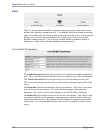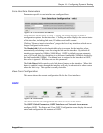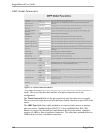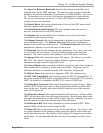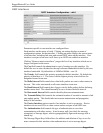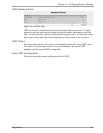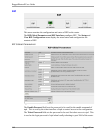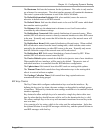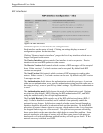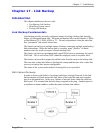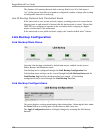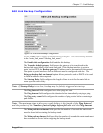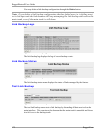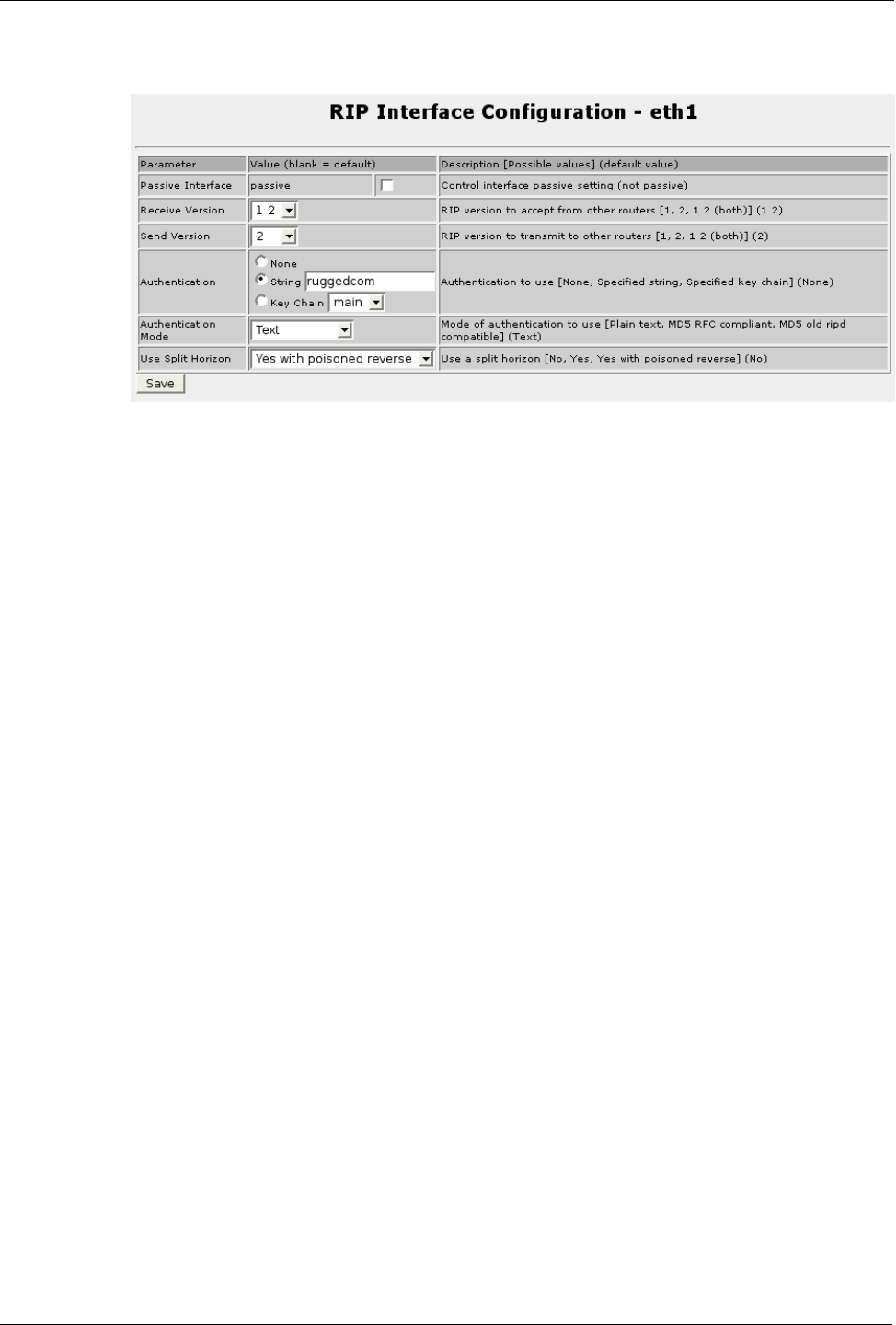
RuggedRouter® User Guide
RIP Interfaces
Parameters specific to one interface are configured here.
Each interface on the router is listed. Clicking on settings displays a menu of
configuration options for that interface.
Clicking “Remove inactive interfaces” purges the list of any interfaces which are no
longer configured on the router.
The Passive Interface option controls if an interface is active or passive. Passive
interfaces do not send RIP updates to other routers.
The Receive Version field controls which versions of RIP messages will be accepted
from. Either version 1, 2 or both versions can be accepted. By default both RIP
versions are accepted.
The Send Version field controls which versions of RIP messages to send to other
routers. Either version 1, 2 or both versions can be sent. By default only RIP version
2 messages are sent.
The Authentication fields choose the authentication mode this port uses. A port can
either use no authentication, use a specific authentication string (used the same was as
the string in a key), or use a specific key chain's settings. By default no authentication
is used.
The Authentication mode field chooses the mode of authentication used. Options
are plain text (the default), MD5 following the RIP authentication RFC, and MD5
using the method used by the old ripd implementation.
The Use Split Horizon field controls use of the RIP split-horizon feature (RIP v2
only). It can be disabled or enabled, and if enabled it can optionally enable the
poisoned reverse feature. Split horizon controls whether routes learned through an
interface should be allowed to be advertised back out that interface. By default RIP
advertises all routes it knows about to everyone, which makes it take a very long time
for dropped links to age out of the network. The split horizon prevents advertising
those routes back out the same interface which helps to control this problem. Some
network topologies with rings of routers will still have some issues with aging out
dead routes even with split horizon enabled but they will still age out faster. If fast
network recovery is desired, use OSPF.
166 RuggedCom
Figure 142: RIP Interfaces



